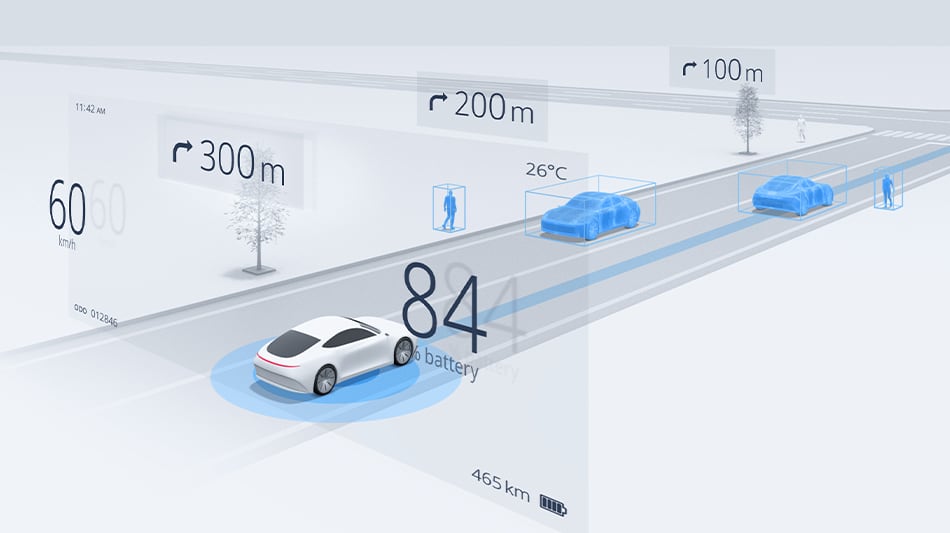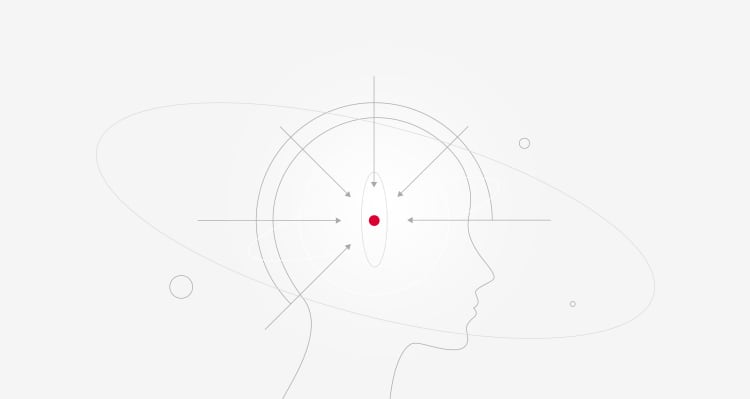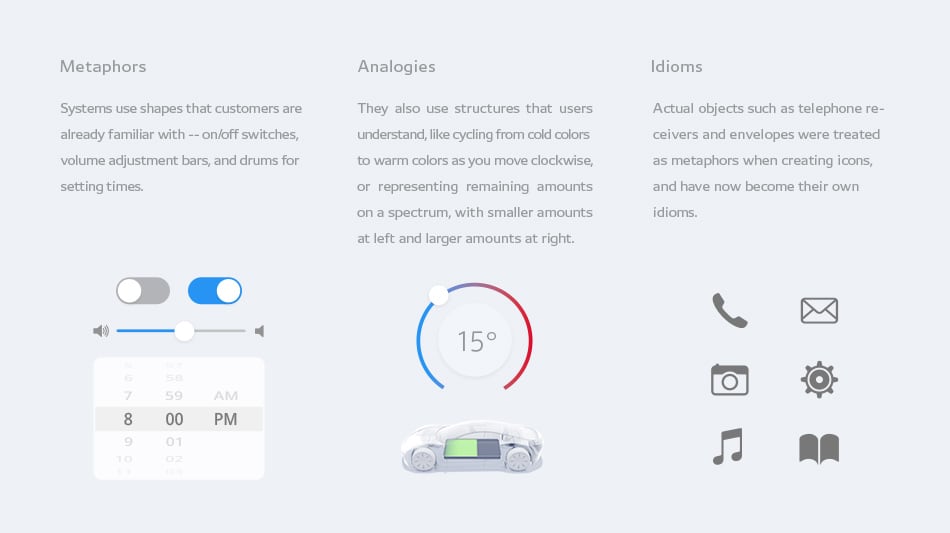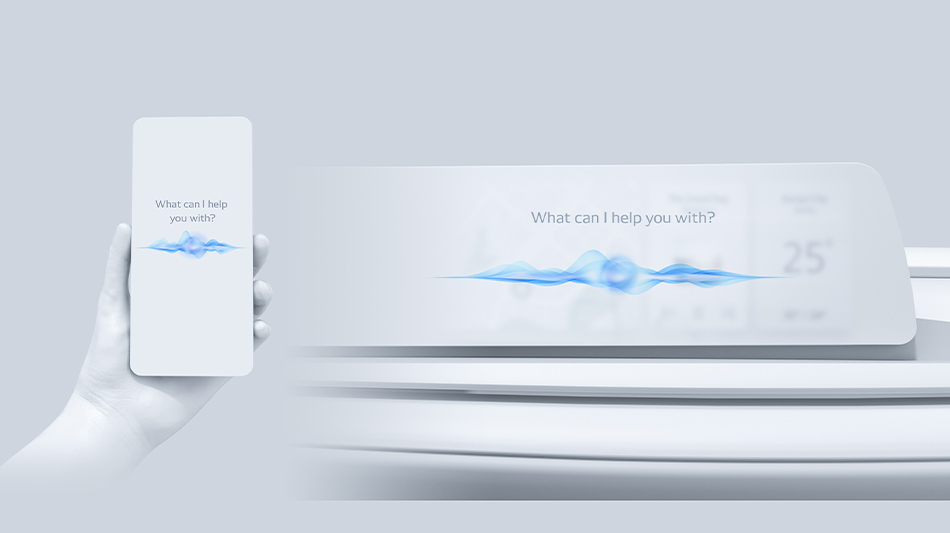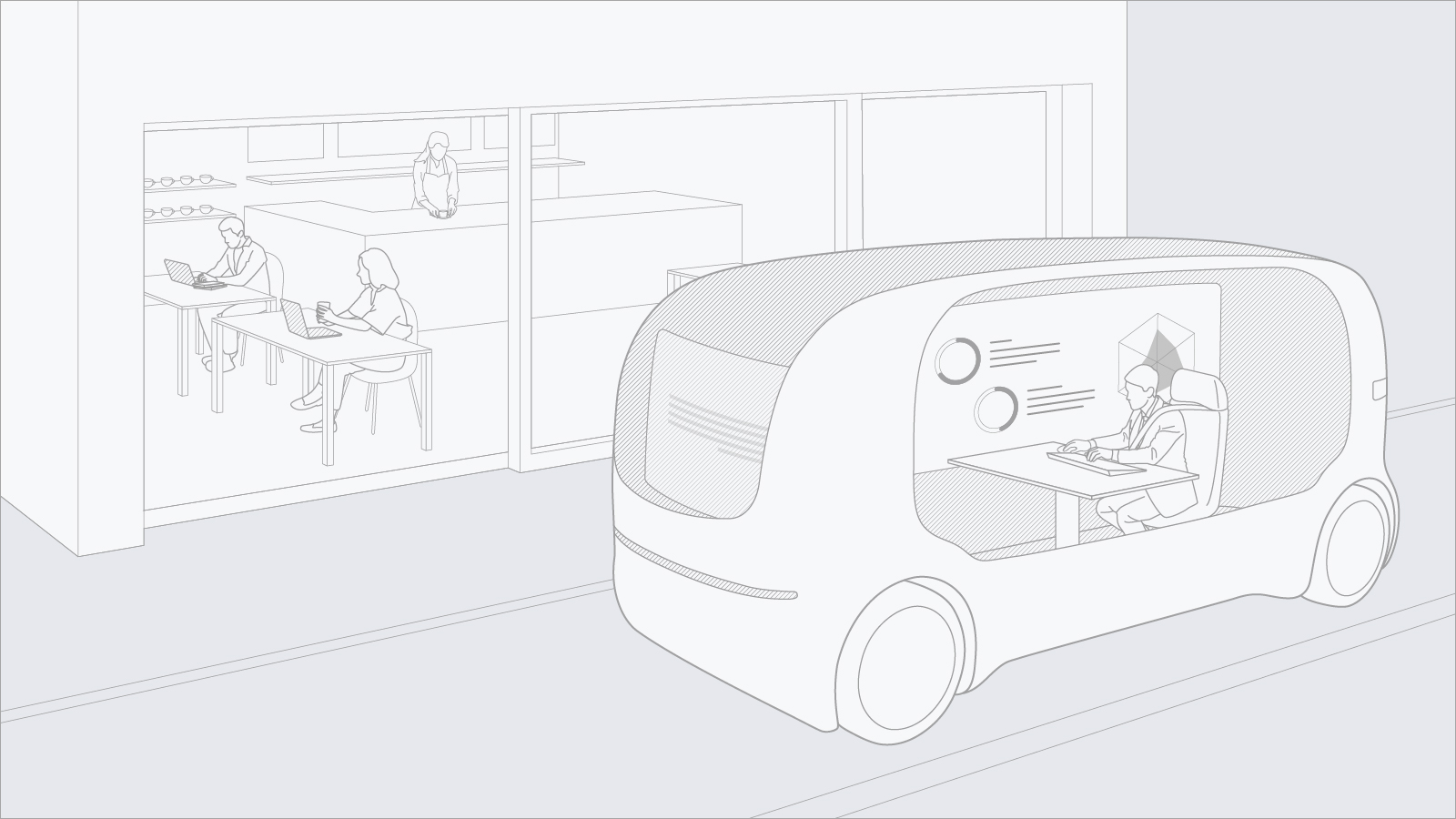(01)Instinctual Behavior
Intuitive presentation of warning information
In the past, warning information has been presented using beeps and graphics (LEDs) in the instrument panel. However, advances in sophisticated driving support technologies and 360° sensing technologies have created a need for the intuitive presentation of information to the driver along with orientation information. In accordance with this principle, warning information is presented from the direction of the approaching danger, so visual and auditory effects are used simultaneously to improve the driver's intuitive understanding.
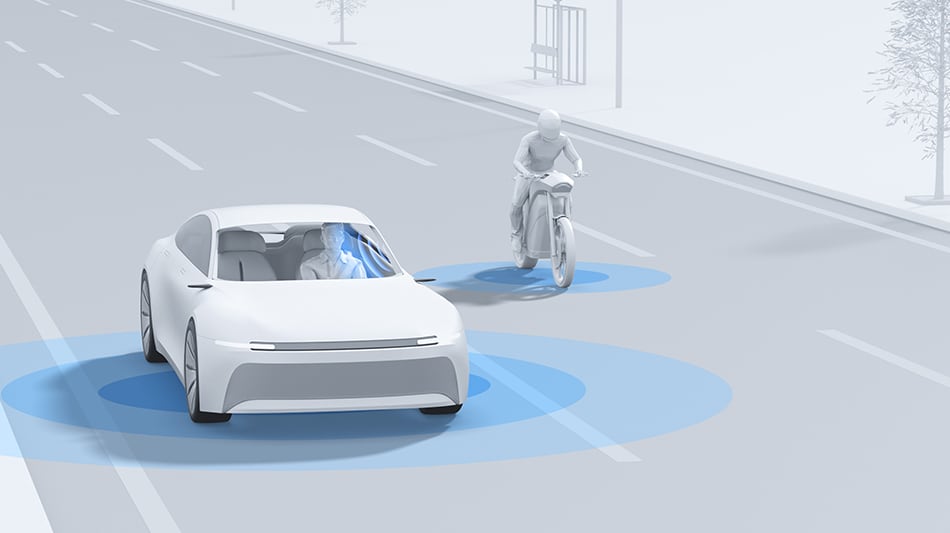
Using different means of expressing vehicle and external information
Providing automobiles with connected functions is increasing the amount of information vehicles convey, which now includes not only vehicle information but also external information. In accordance with this principle, we express vehicle information with highly visible text and symbols, while external information is expressed in ways that make it easy to reconcile with real-world spaces.
